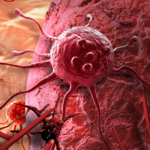Vitamin D: Lifesaver- Part I
Vitamin D is important for a wide range of activities in the human body. Our bones need it to regulate calcium levels, our immune system relies on it to fight cancer, and vitamin D protects our hearts by limiting calcium buildup in the vessels.
Despite the name, vitamin D is more hormone than a vitamin. That’s because vitamin D acts as a messenger in the body to trigger a response from various organs. Vitamins work differently—they help assist chemical reactions.
Healthy Bones
Because Vitamin D impacts blood calcium levels, it plays a major role in bone health. When blood calcium levels drop, vitamin D signals the bone to release calcium back into the system to bring it back up. Vitamin also promotes the absorption of calcium from the digestive tract, and reduces the amount of calcium lost through filtration by the kidneys.
When calcium levels are increased in the bloodstream, vitamin D moves calcium into the bone, making it crucial for the growth of bones in children and repairing bone after a fracture. Rickets, a condition characterized by poorly formed and soft bones in children, is one of the most common symptoms of severe vitamin D deficiency. In adults, vitamin D deficiency can be associated with conditions like osteopenia and osteoporosis.
 Preventing Early Cancer
Preventing Early Cancer
The cells in our body are constantly multiplying. Sometimes the DNA of the daughter cell becomes damaged and mutates during the process. This may result in the formation of a cancer cell, which will continue to multiply spread to other areas of the body. In order to avoid this life-threatening illness, the body must respond quickly. This is where vitamin D plays a role
Vitamin D binds to mutated cells and interacts with the nucleus where the DNA is located. If the problem can’t be fixed, vitamin D causes the cell to die, eliminating the risk of it multiplying and forming tumors. For this reason, Vitamin D deficiencies leave us largely unprotected from cancer prevention.
If there isn’t enough vitamin D in the blood to interact with these mutated cells, our bodies need to rely on other parts of the immune system to identify these cancerous cells before a problem can occur
Tuberculosis & Immune Health
In the past, one of the methods of treatment for deadly tuberculosis infection was sunlight. It was thought that the sunlight was killing the tuberculosis directly. It was only later discovered that the reason sunlight had such a profound effect on tuberculosis was that patients, who were often bedridden and received little to no sunlight, had sudden increases in vitamin D levels. This resulted in a significant increase the immune system’s ability to fight the infection [4].
Today, vitamin D is a key element in treatment protocols for conditions involving the immune system.
Vitamin D has been shown to modulate both the adaptive and innate immune systems through a complex binding process in the blood. It has been shown to play a role in the production of immune factors including cytokines, lymphocytes, and macrophages [5]. Vitamin D deficiency has also been shown to play a role in the development of autoimmune conditions like multiple sclerosis and lupus [7]. Maintaining adequate vitamin D is crucial for defending the body against both autoimmunity, and immunodeficiency through its role in the production of key immune cells and inflammatory factors. [8].
Questions or Comments? Please contact me or call me at 650-564-9002.
Next Time:
Vitamin D: LIfesaver-Part II: Vitamin D and Heart Disease; Vitamin D Sources; Vitamin D Testing; Top 9 Benefits; Recommended levels of vitamin D.
References
- DeLuca, H. F., & Suda, T. (1969). Current progress in the study of vitamin D–discovery of active vitamin D. Tanpakushitsu kakusan koso. Protein, nucleic acid, enzyme, 14(12), 1068.
- Institute of Medicine, Food and Nutrition Board. Dietary Reference Intakes for Calcium and Vitamin D. Washington, DC: National Academy Press, 2010.
- Mattila, P. H., Piironen, V. I., Uusi-Rauva, E. J., & Koivistoinen, P. E. (1994). Vitamin D contents in edible mushrooms. Journal of Agricultural and Food Chemistry, 42(11), 2449-2453.
- Williams, C. J. B. (1849). Cod-liver Oil in Phthisis. London journal of medicine, 1(1), 1.
- van Etten E, et al. Regulation of vitamin D homeostasis: implications for the immune system. Nutr Rev. 2008;66(10 Suppl 2):S125–34.
- Ginde, A. A., Mansbach, J. M., & Camargo, C. A. (2009). Association between serum 25-hydroxyvitamin D level and upper respiratory tract infection in the Third National Health and Nutrition Examination Survey. Archives of internal medicine, 169(4), 384-390.
- Adorini, L. (2005). Intervention in autoimmunity: the potential of vitamin D receptor agonists. Cellular immunology, 233(2), 115-124.
- Aranow, C. (2011). Vitamin D and the immune system. Journal of investigative medicine, 59(6), 881-886.
- Parker, J., Hashmi, O., Dutton, D., Mavrodaris, A., Stranges, S., Kandala, N. B., … & Franco, O. H. (2010). Levels of vitamin D and cardiometabolic disorders: systematic review and meta-analysis. Maturitas, 65(3), 225-236.







